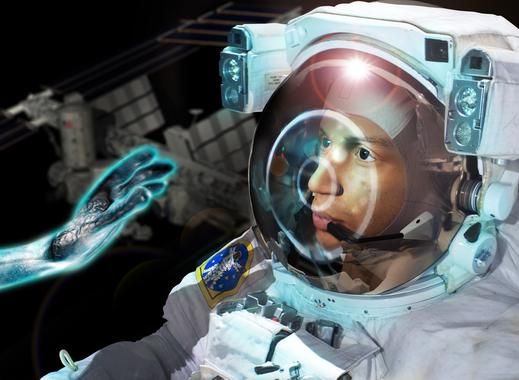Since the first modern Olympic Games bowed in Athens in 1896, humanity has gradually integrated the developments of science and technology into the realm of competitive sport.
The various attempts to slow the utilization of advanced materials, pharmaceuticals, biotechnology, and robotics is akin to keeping certain gender or ethnic groups out of the games. Not just discrimination, but impeding the flow of progress.
If the ultimate goal of world-level competition is advancement of human physical ability, then athletes, coaches, physicians, and biotech engineers should be able to choose the very best tactics and strategies to achieve that goal.
A Transhuman Olympics would be wildly entertaining, but would also spur the development of biotechnology at a pace that public and private science could never keep up with. While the ethics of such an event might be hotly contested, the benefits to humankind would be lasting and far reaching.
Competitors involved would sign a medical waiver and hold harmless agreement. Education for both athletes and trainers would be mandatory so that participants and competitors understand the risks. Athletes in particular would have to attest that they are willingly participating in the games and that at the time of their consent to do so, they were of sound mind.
Performance enhancing substances — anabolic steroids, human growth hormones — would be permitted. Safer formulations would be encouraged. Experimentation would also be encouraged, insofar as it would drive the development of substances with less extreme, more commercial applications, outside of the games.
Biotechnology augmentation and bioengineered device integration would also be advised. Biotech is still in its relative infancy and the mainstream medical benefit for technology spun-off from this kind of competitive arena would be amazingly valuable.
In short, virtually any edge that provides enhanced performance times, distances, heights, or otherwise advances human competitive ability — be it mechanical, pharmaceutical, biotechnological, or genetic — would be considered fair game.
Boredom and sport would never again occur together in the same sentence. The performance-enhancing scandal that supposedly hurt the image of baseball in the late 1990s, led to new records from players like Mark McGwire, Sammy Sosa, and Roger Clemens, as well as a substantial lift in audience attention at the world level.
Some of the most competitive and gifted athletes in baseball watched as their reputations were dragged through the proverbial mud, as members of US Congress and the Federal judiciary presided over efforts to jail both trainers and athletes alike.
In reality, the use of performance enhancing substances in baseball goes back to 1889, when pitcher Pud Galvin used, and vocally endorsed, Brown-Séquard Elixir, a monkey-sourced testosterone supplement.
“Doping,” as it is commonly referred to, remains an American taboo subject.
The Transhuman Olympics would provide a venue for science to be more competitive and for athletes and trainers to take measures that they deem befitting to secure the best performance results.
Rather than laboratory-based timelines — often handled in academic settings, with limited access to financial resources — scientific improvements would need to find practical applications in the real world. Research efforts would have to provide meaningful, actionable improvements to athletic performance, within real world timeframes.
Imagine for a moment the incredible entertainment value. Perhaps countries with the most money just emerge victorious. Perhaps smaller scientific efforts with less access to resources would be forced to find novel innovations to gain a competitive advantage.
Watching athletes push the limits of humanity to achieve new records and break through established competitive plateaus is a fundamental facet of human evolution. The Transhuman Olympics would simply better facilitate that process.
Over time, the opportunity to invent new sports based on emerging capabilities and new technological developments would emerge. When the 1896 Olympics revived the ancient Olympic tradition, only one sport was excluded from the games (for you history buffs, the sport was pankration, a mild mixed martial art). However, with new technology and advanced human capability comes new competitive territory. Imagine a real-life Icarus competing with other airborne humans. Underwater games or sports in low-Earth orbit — the competitive horizon is endless.

Robotic elements, like chaser drones, helping athletes to see around corners or from other perspectives would be spectacular. Imagine force multipliers to provide boosts of strength or improve the strength and resilience of joints, muscles, tendons, and/or ligaments.
Once tested and proven in the venue of competitive sport, these technologies would have the widespread potential for mainstream medical adoption. Think of elderly patients who have trouble walking or individuals dealing with neurodegenerative disorders, now empowered thanks to the sacrifices and risks taken on by these gladiators of evolved sport.
Until modern society overcomes its resistance to unencumbered, more loosely regulated sporting events, the Transhuman Olympics would need to be held in a country with fewer controlled substance laws.
This country would likely receive a substantial windfall of medical tourism, so long as the technology being utilized was also developed there. Cuba springs first to mind but other present-day medical tourism destinations include Argentina, Brunei, Jordan, South Africa, Singapore, New Zealand and many others.
In modern Olympic competition, corporate sponsorship was first forbidden.
It wasn’t until 1972, when the medium of television opened up new channels for advertising, that corporate sponsorship began to emerge. In the Transhuman Olympics, corporate and/or government sponsorship would be essential and robustly encouraged.
With each passing Olympic games, the amount spent increases dramatically. Russia spent $51 billion on the 2014 games in Sochi, in the hopes of capturing and drawing the international spotlight.
In the Transhuman Olympics, the core benefits would include not only spectators and advertising sponsors, but tangible medical advancements and beneficial intellectual property.
We’re already living in the age of the technologically enhanced athlete.
LZR Racer swimsuits, made of woven elastane-nylon and buoyant polyurethane provided swimmers the ability to shave relatively substantial amounts of time from races. Those suits were banned in 2010, following the 2008 Beijing games.
The 1936 Olympics in Berlin showed Hitler that preconceived notions of superiority were no match for the power of diversity.
In 2012, for the first time since the inception of the International Olympic Committee, all countries participating in the Olympics sent delegations that included both male and female competitors. That same year, 204 countries sent competitors to the games.
Now that the human race has achieved an even playing field for global competition, the next step is technologically empowered, superhuman competitors.
Kindly join me in supporting the call for a Transhuman Olympics.









